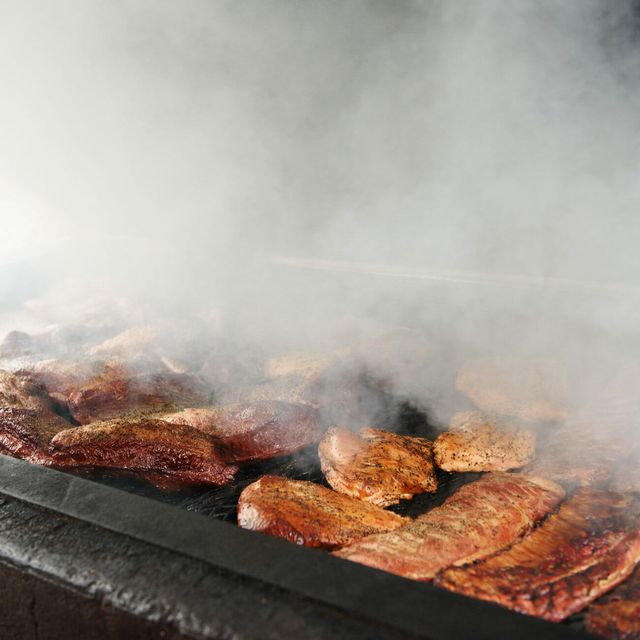This may come as a shock to would-be pitmasters everywhere, but more smoke does not mean better barbeque. Plumes of billowy, opaque white smoke spilling from a pit is a tell-tale sign of poor fire control. What you really want is a consistent, fast-moving stream of blue-grey smoke — so thin it’s barely visible. Here’s why.
Thick smokes is unhealthy (and it tastes bad)
All smoke carries particles that give flavor to food but thick smoke carries them in bittering, borderline unhealthy doses in the form of carcinogenic creosote, an oily, tongue-numbing residue of wood and charcoal that didn’t fully burn.
Thin, wispy blue smoke, on the other hand, provides a flavor boost without smothering your food. As a general rule of thumb: the harder it is to see the smoke coming out of your chimney, the better.
Good smoke comes from hot fires
Smoke is a “visible collection of a variety of solid, liquid, and gas particles left unburned during the combustion process.” Thick, white smoke is the product of more particles left unburnt during combustion. Translated into barbeque terms: white smoke is the sign of never-alive or nearly-dead fires.
To counteract this, leave exhaust vents open to maximize oxygen intake to your coal or wood bed. This will increase the temperature of the flame and ensure your chosen fuel is fully combusting and creating only the good smoke.
Water is the enemy
Depending on who you ask, the majority of barbeque-approved woods are made up of 50 percent water. Burning water-logged wood means steam, steam means a cooler fire and a cooler fire means bad smoke. This is also why soaking wood before barbequeing makes very little sense. To get around the water problem, only buy seasoned wood that’s air- or kiln-dried to eliminate as much of the wood’s moisture content as possible.
Good smoke requires patience
Just because your fire is hot doesn’t mean it’s ready for food. Both wood and charcoal will emit white smoke when first ignited; as the fire gets hotter, white smoke gives way to a dark grey smoke which, if given ample oxygen to feed on, then becomes hallowed blue smoke. In other words, let your fuel source burn until it’s hot enough to produce the good stuff.

















